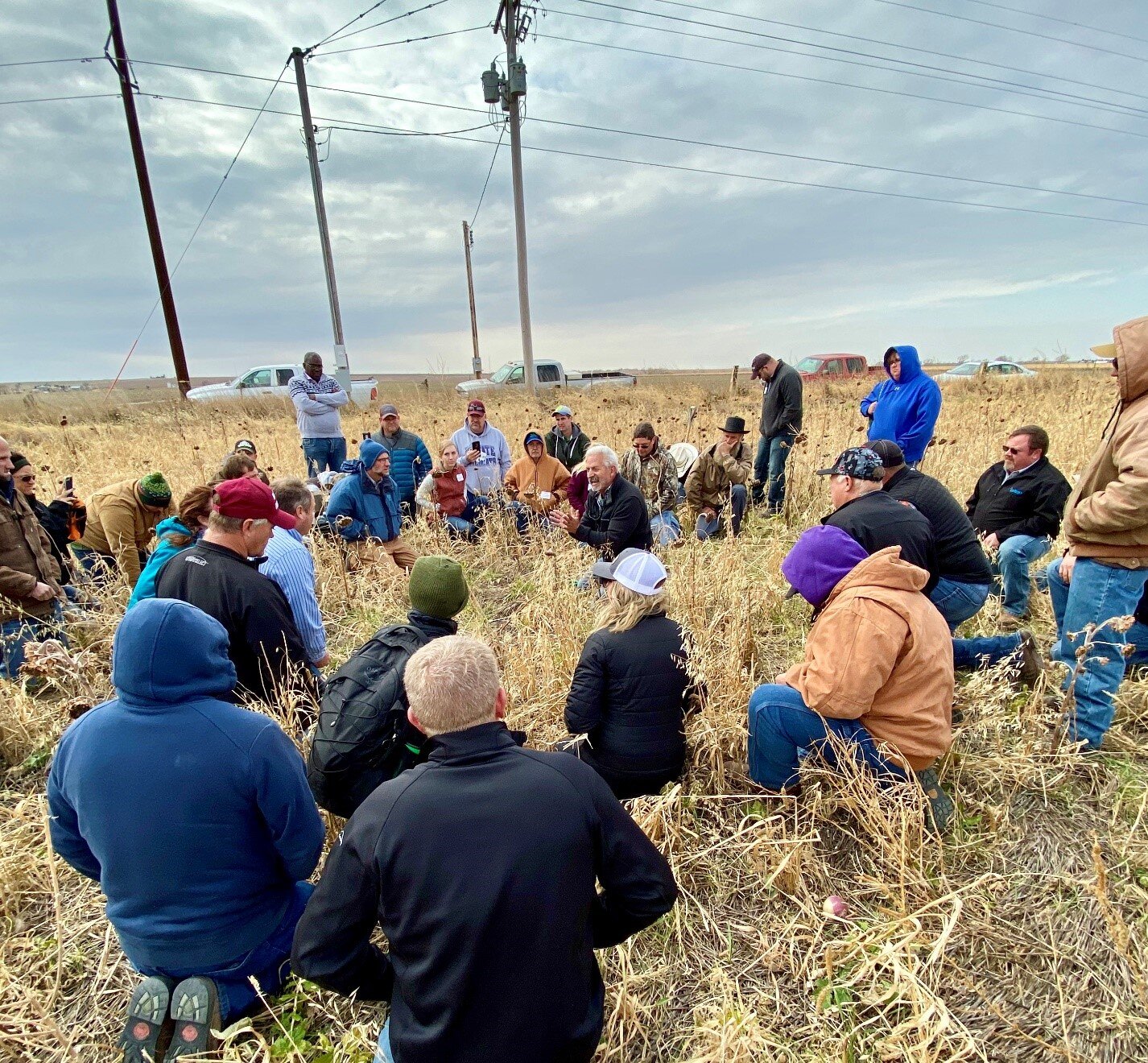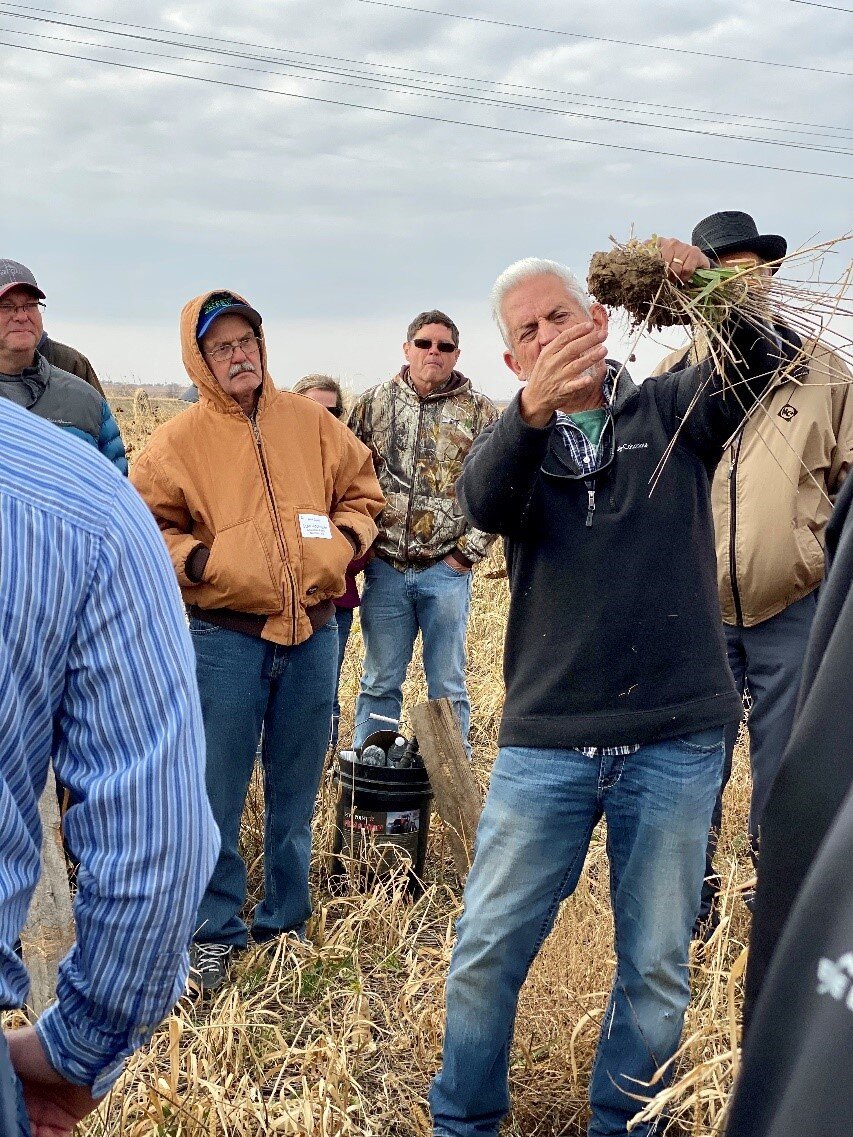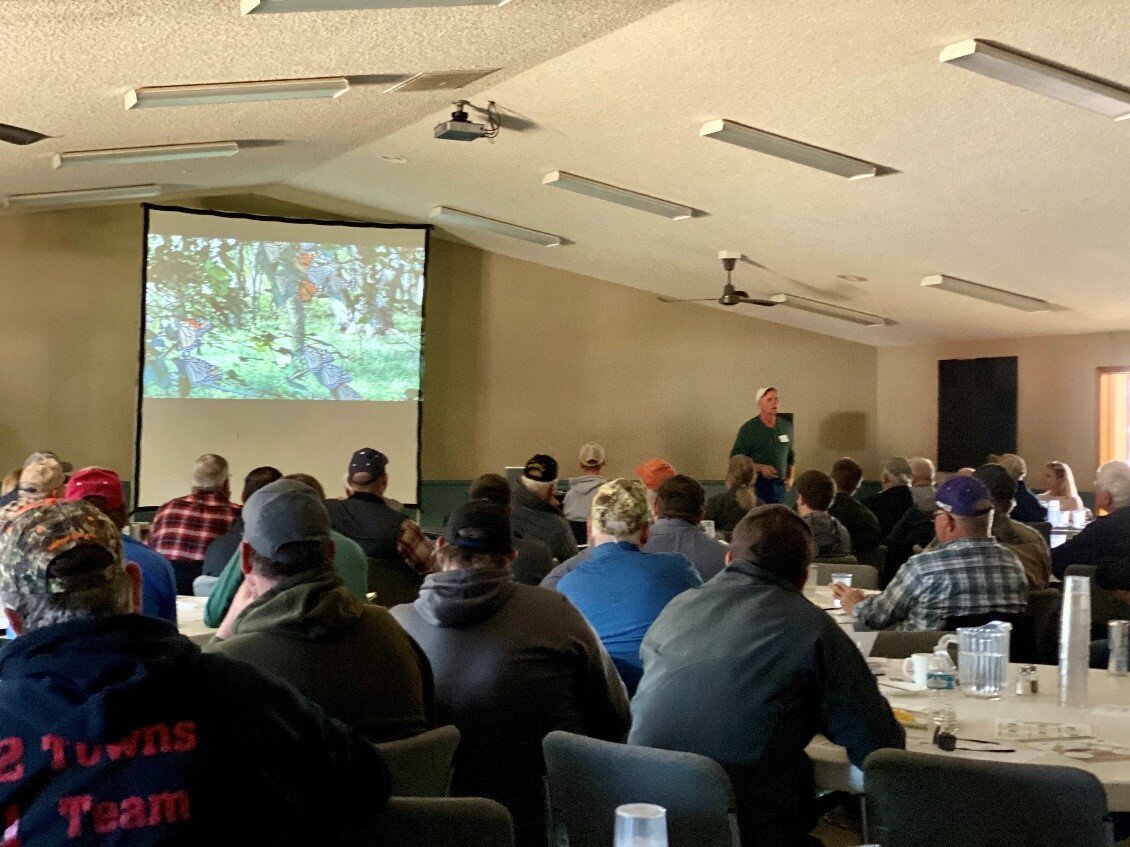Sustainability initiatives have been included in major corporations’ annual reports for decades, delineated by listed objectives, tracked by specific KPIs, and broken down by set target dates. While efforts to advance regenerative agriculture are starting to take up more space on these reports, the very tenets of the regenerative ag movement necessitate a different approach to measuring them. Long gone are the checklists of practices and adherence to regulated standards; regenerative agriculture invites innovation at every level.
If global food companies want to claim regenerative agriculture on-pack and actively fight against greenwashing, they need to embrace the holistic, place- and outcomes-based principles that the regenerative agriculture movement emerged from. Our Chief Innovation Officer recently spoke with Steve Rosenzweig, Senior Soil Scientist, and Jay Watson, Sourcing Sustainability Engagement Manager, both at General Mills, to learn about their strategy and what they think the industry should be doing.
Ethan Soloviev: What is General Mills currently working on?
Steve Rosenzweig: In 2019, we committed to advance regenerative agriculture on one million acres by 2030. Since then, we have been setting up pilot programs for how we engage with farmers in our key sourcing regions to help them transition or implement these regenerative systems. Our approach focuses firstly on education, and we partnered with the Soil Health Academy to instill that regenerative mindset. We acknowledge that it’s a different way of thinking in a different paradigm for a lot of farmers, and we have to deprogram that conventional mindset and give them a solid foundation in regenerative principles.
Soil Health Academy – Photo by General Mills
ES: Do farmers actually want this help?
Jay Watson: I’d say yes, some farmers want it. We pair them with technical resources – many of whom are farmers themselves who have gone down the path already – to help them identify the right things for their farm, rather than just tell them what to do. The one-on-one coach is there to help steer the producer if they’re getting off track, but it’s the producer’s decision to figure out what they want to do based on their unique understanding of their system and farming operation.
SR: Farmers are really hungry for this information. A lot of them have their backs against the wall economically and they’re looking for a different way to operate. We’re providing one-on-one coaching for three years because it’s a process that evolves: there are so many ingrained assumptions about agriculture that farmers carry with them, and it’s going to take time to overcome that even among those that already have an open mind. That’s been one of our early challenges, but one we see as an opportunity, and a signal that we’re on the right track with this one-on-one coaching model.
ES: Why are you focusing on outcomes and not on practices?
JW: A lot of our work has always been focused on outcomes because it’s the “so what.” We care about water and soil health, biodiversity, profitability, not just about compliance or meeting a checklist of practices.
SR: There is no one practice that produces a regenerative effect in every context, and there are hundreds of different kinds of practices that you can implement to achieve the same effect. We focus on principles and outcomes because they are much more flexible to a farmer’s unique context.
We’re focused on five outcomes: soil health, biodiversity, water, farmer economic resilience, and cow and herd well-being (on dairy operations). We have a road map for each of those outcomes, including how we’re currently doing it (which is really expensive and time-consuming), and how we’re planning to do it in the future, which is a much more scaled and streamlined way of monitoring changes in those five outcomes in our key sourcing regions.
ES: You have pilots on wheat, oats, dairy – do you think you’ll expand to all the ingredients in the supply system?
JW: We’re creating this opportunity to pitch a very large tent that many others can come under, and I think our [place-based] approach in focusing on regions versus specific supply chains invites a different level of partnership and collaboration. We are looking at the next places where we might have some partnership opportunities, where there might already be a strong ground game of support locally that we could help amplify or accelerate. It’s going to take a lot longer if it’s only General Mills and a subset of other companies versus everyone who’s buying a commodity ingredient in a particular region helping to advance the overall effort.
SR: The idea with these pilots is we’re going to help the farmers who are really interested in moving down this path accelerate their learnings. We’re thinking about how we can support them and build their mentorship capacities so that when their neighbors ask them “how are you doing this?” they have the ability to translate that and inspire the community to move along with them.
JW: The scaled approach needs to be a locally-led approach, so [we’re] figuring out how to invest in the local capacity and capability and really letting the local experts build more of a sustainable, regenerating model to ensure that it keeps moving forward.
Photo by General Mills
ES: There’s been some thought that regenerative ag has been painted as a panacea or a silver bullet that solves everything. What are your thoughts?
SR: Regenerative ag is not going to reverse climate change. We can’t take out all of the carbon we’ve ever emitted and we’re still emitting; we still have to focus on stopping emissions. But, when we look at the opportunities to fight and adapt to climate change, increase biodiversity, improve water, and improve farmer economic resilience, we believe regenerative ag is by far the most promising strategy.
JW: Regenerative ag is about all these positive impacts, not just climate. It’s about the whole ecosystem — including the people and the stewards of the land in the ecosystem. It’s part of a total system driving the whole agriculture industry forward.
ES: For a long time, companies and organizations have been working to reduce harm to get to ‘sustainable’ or net zero. Is it actually possible to go beyond that? Can you get to the point where you are sequestering carbon or increasing biodiversity?
SR: There are so many instances in anecdotal reports from farmers and scientific literature that it’s totally possible to regenerate soil health, regenerate biodiversity, provide cleaner water, and have a more profitable and resilient business. There are lots of farmers doing it. Part of the challenge is figuring out how we actually measure the total impact that all of these different farmers are having in a region.
JW: It’s maybe not all that surprising, but leading with climate doesn’t resonate with all producers. [One of our early learnings] is that we need to bring a holistic value proposition that will resonate with the producer wherever they are. It’s not just about our climate commitment and reducing emissions so that we can talk about net zero. It really is about all these cascading, compounding benefits that we see in regenerative agriculture.
ES: What type of science and technology will help transition from phase 1 of researching and information gathering into the larger phase 2? What do you see on the horizon that folks in the industry should be paying attention to?
SR: We could talk about better sensors, better models, and better ways of quantifying outcomes, but I think one of the most transformational opportunities is a different mindset within science itself. So much research that’s been done to date has looked at the impact of changing just one thing because that’s so much easier to study. But, farmers that are going down this regenerative path are changing a lot of things in a systems approach, so we need a scientific approach that can match that and enable us to quantify the emergent benefits of whole systems. It will enable us to quantify “how long is it taking farmers to become more profitable? How quickly can soil regenerate? Does it always regenerate? What types of insects and bird species are impacted by infield, agricultural management as opposed to surrounding habitat?”
ES: We have a couple of questions from other members of our community: What exactly does monitoring biodiversity look like? And what do you think it will look like 10 years from now?
SR: Each farm is dedicated to a study field. For example, we’ll look at all the insects living in the soil, in the plant canopy, and flying in the air, each with different techniques. We’re working with Jonathan Lundgren’s group at the Ecdysis Foundation to do that research, and simultaneously testing out sensors that shine infrared light and use machine learning to tell what type of insect they’re looking at. We’re trying to develop technology where a farmer would be able to drive a tractor through a field and passively know all of the different insects living in that field — what type they are and if they are a pest or a predator — so they can really start to understand who’s there.
JW: There’s a focus on functional biodiversity, so it’s not biodiversity just for biodiversity’s sake, it’s the so-what. Some producers don’t need the so-what, but a lot of producers will ask “what does this biodiversity get me? Does it help with pest predation? Does it help with pollination? What are the services that more biodiversity provides?” That’s what we’re studying, and that research is pretty novel.
ES: Another question from a community member: As a graduate student studying regenerative ag, I often encounter what I have dubbed the “generational changeover” conundrum with farmers considering regenerative practices. I.e. many of them are in their late 60s or early 70s, rent a lot of their land so they don’t have control over soil practices, and are trying to pay down an ever-increasing debt load. They are struggling to build succession plans as many of their children don’t see a future in agriculture. Thus many don’t feel it is worth it to invest in regenerative practices which may take years to boost yields. Have you encountered this issue and how are you working to convince them to pursue regenerative practices?
SR: There definitely is a generational shift happening and we’ve seen it both ways. The older generation has now seen the light of regenerative ag and they don’t have many more cropping seasons to do it, so they are more fired up than just about anybody. But something we see all the time is when it’s the younger person that wants to do regenerative ag but they don’t have the decision-making ability. We make sure that they bring the decision-makers on their farm to the soil health academies and field days to plant the seed, so that when they do want to change something later on, they’re all coming from the same point of reference. The coaches are not just coaching on the particular field or with one particular person, they’re coaching on the whole farm level, and they can help to mediate some of those conversations.
JW: One of our producers in Kansas attended a soil health academy with one of his sons and now there’s an interest from his three children in coming back to the farm because they see an opportunity to leave their own mark, do something differently, maybe revitalize what’s there. Coming back to the farm doesn’t mean you have to do things the way that they’ve been done for the last several generations. If you have a lot of broken ecosystem processes and degraded resources, you can change what’s there for you and what’s left for future generations.
Soil Health Academy – Photo by General Mills
ES: Do you think this makes business sense for General Mills as a company for the short-term, mid-term, long-term?
JW: I definitely think it does. It’s good for the planet, good for producers, and I think it’s good for business as well. We talk a lot about supply chain resiliency. When we have ecosystems that aren’t functioning and are sourcing ingredients from those ecosystems, there could be significant disruption with market shocks and weather shocks. We have really strong supporters in our executive management team because I think they understand that the opportunities go well beyond risk mitigation to creating differential value for customers and consumers. I think we’re at the tip of the iceberg to unlocking a lot more value for our organization and for the broader system, but it’s going to take some time.
ES: Any last thoughts on advancing regeneration?
JW: The regenerative thinking in the business context is shaping how we think about our approach to these pilots a little bit differently, and that’s been a welcome invitation.
SR: We’re early on in our journey. If you talk to us three months from now and ask us the same questions, I bet we would have different answers. We’re going to be constantly learning and evolving.
This interview has been edited for length and clarity.
Check out our blog for more interviews with industry leaders in the biodiversity, regenerative agriculture, and planetary health movements.










